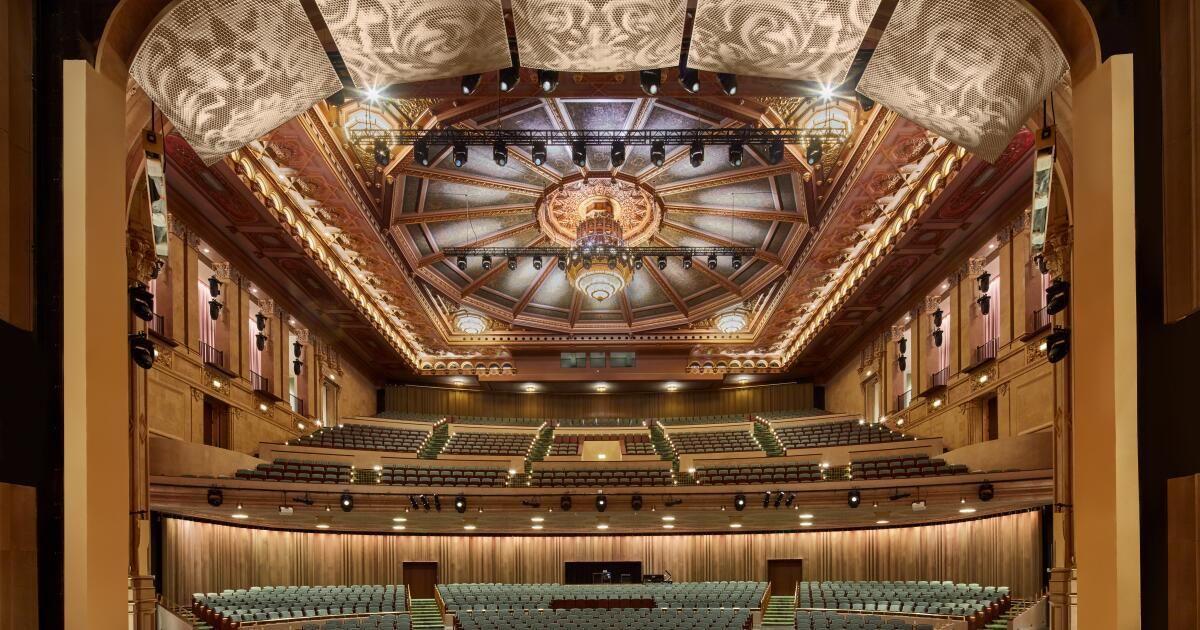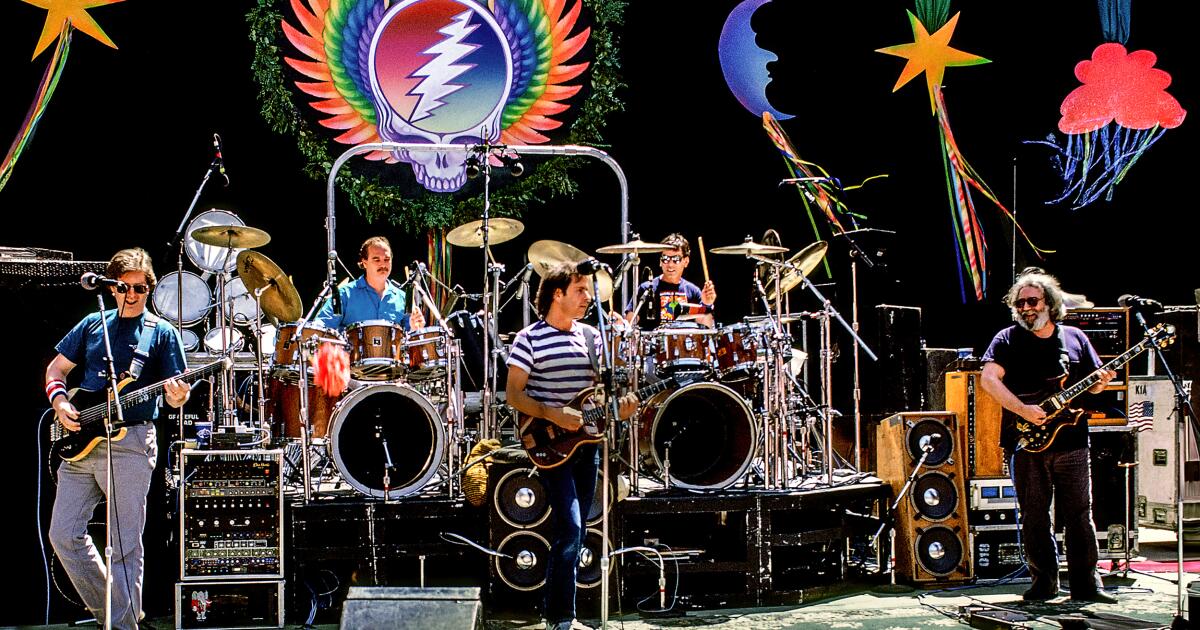As concert halls across the country closed their doors and people gulped in anxiety about the pandemic’s future (this was March 2020, but no one has forgotten), Martha Gilmer saw an opportunity.
Since taking over as executive director of the San Diego Symphony in 2014, Gilmer has had as one of her three big goals a major renovation of the orchestra’s Jacobs Music Center in downtown San Diego. With the hall empty and prospects for reopening soon dwindling by the week, Gilmer said, “In some ways, we hit the gas.”
Audiences will experience the impressive results on September 28, when conductor Rafael Payare and his orchestra launch their 2024-25 season in a program designed to showcase their new “instrument.”
Gilmer and his team recently gave a thorough tour of the reborn hall, and the noise of the final construction was still in the air. When we walked in, new chairs were being unpacked on the stage, much to Gilmer's delight: “I've been waiting 10 years for new orchestra chairs,” he exclaimed.
The changes inside Jacobs are vivid, starting with the aesthetics: Blue chairs have replaced the imposing sea of red, with a much more natural curve and slope for sight lines to the stage and vastly improved lighting illuminating the murals and ornate facades. In addition to safety-related upgrades like air filtration and ADA seating, new amenities for musicians and guest artists backstage include green rooms, guest artist suites, practice rooms, instrument lockers, and a new music library, as well as new staircases and elevators.
In total, the renovation cost $125 million.
San Diego Symphony Executive Director Martha Gilmer tries out new seating inside the renovated Jacobs Music Center.
(Todd Rosenberg / San Diego Symphony)
With so many orchestras and arts organizations struggling financially during and after the pandemic, how did San Diego manage? Gilmer points to a framed photo on his desk of Irwin Jacobs and his late wife, Joan.
“They have turned the fortunes of this orchestra around,” he said, referring to their $120 million donation in 2002 — the largest donation ever made to an American orchestra — that funded a foundation. Jacobs, an engineer who co-founded Qualcomm, has been a leading philanthropist in his adopted hometown, where he began teaching at the University of California, San Diego, in the 1960s.
“Joan and I had the opportunity, during many business trips around the world, to hear music performed in many of the great concert halls,” Jacobs said via email. “We felt that our audiences and our musicians deserved a great hall.”
The couple continued to donate annually and have significantly supported the renovation campaign, though the symphony declined to specify how much. The rest was privately funded by other donors.
Audience members had long complained of the terrible acoustics under the balcony overhang and poor views from many seats, especially at the top. Musicians made do with a byzantine area behind the stage that resembled a narrow obstacle course, with percussion instruments stacked in one corner. The legs of the makeshift orchestra shell earned the nickname “shin-breakers.” Awkward stairs and catwalks seemed like safety hazards, and musicians had few good places to practice. Guest artists had to walk to the catwalk’s steel stairs and descend four flights of stairs from the artists’ entrance.
However, the uniqueness of the building's quirky history was part of its appeal. It was built in 1929 as the Fox Theatre, the third-largest movie theater on the West Coast when it opened to visits from Hollywood royalty including Jackie Coogan and Joan Crawford.
The circus film “Freaks” had its world premiere here in 1932, and with its expensive organ, rococo interior design and grand chandeliers, the Fox was the local destination for movie-going during Hollywood’s Golden Age.

An architectural detail inside the San Diego Symphony's renovated Jacobs Music Center.
(Richard Barnes / San Diego Symphony)
It later hosted live productions of Neil Simon plays and traveling musicals, and in the 1970s and 1980s, it hosted concerts by Merle Haggard and Count Basie. The San Diego Symphony, California's oldest orchestra, whose previous homes had been the U.S. Grant Hotel and the Civic Theatre, purchased the Fox in 1984. It reopened as Symphony Hall the following fall.
For all its flaws as a classical music venue, it was one of the best-preserved theaters on the former Fox network, which sealed the deal for Gilmer and the board to “really embrace the past,” he said, and renovate rather than build new.
Talks about the renovation began in earnest in April 2018. The first contact was acoustic designer Paul Scarbrough, then of the Santa Monica architecture firm HGA.
Over the years, the theater had been surrounded by the 34-story Symphony Towers and the Marriott Vacation Club, with a giant parking garage overhead. The architects realized that the dead space on all sides could be used creatively: All the HVAC and electrical equipment could be moved from the basement and suspended in the free space above the building, and the unused side spaces — all five floors — could be reclaimed for the orchestra.
When Payare began his tenure as music director in the fall of 2019, he and Gilmer asked musicians about changes they hoped for the hall. Payare would often say, “The sky’s the limit, guys.”
“He doesn’t see barriers,” Gilmer said. “He only sees opportunities.”
The new conductor was just five weeks into his debut season and was still based in Berlin when the world stopped. He flew to San Diego just before travelers from some countries were banned from entering the United States, because “I know how important it is for musicians to stay connected,” Payare said.
In the face of the pandemic, he wondered “how can we ensure that we still keep the flame of hope alive?”
The first lighthouse was another of Gilmer’s big goals: an open-air venue that would serve as the San Diego Symphony’s version of the Hollywood Bowl. The Rady Shell, already under construction, opened in the summer of 2021, providing the orchestra with a safe place to play year-round, with a beautiful view overlooking San Diego Bay.
With the hall idle, construction got into full swing. The entire audience area was gutted and rebuilt, new foundations were laid in the basement, and spaces were waterproofed. No more carrying buckets to the guest conductor's suite every time it rains.
New boxes were added and the original chandeliers were sent for restoration. The ceiling was raised and a choral terrace was built on the stage so that the orchestra could perform Mahler’s Third Symphony. Sophisticated tuning and acoustic systems were installed (including a cantilevered roof system and modular door panels surrounding the stage) that will allow much greater control of the sound at different types of concerts.

New lighting highlights the original ornamentation of the San Diego Symphony's Jacobs Music Center, formerly a movie palace.
(Richard Barnes / San Diego Symphony)
One by one, the items on the musicians' wish lists were checked off.
“San Diego,” Gilmer said, “is a city whose future, I believe, is bigger than its past.”
At the very least, the future seems to sound much brighter. Now, she and Payare are faced with a crucial question, one that will soon be faced by the St. Louis Symphony, which is renovating its 100-year-old hall.
If you build it, will they come?












